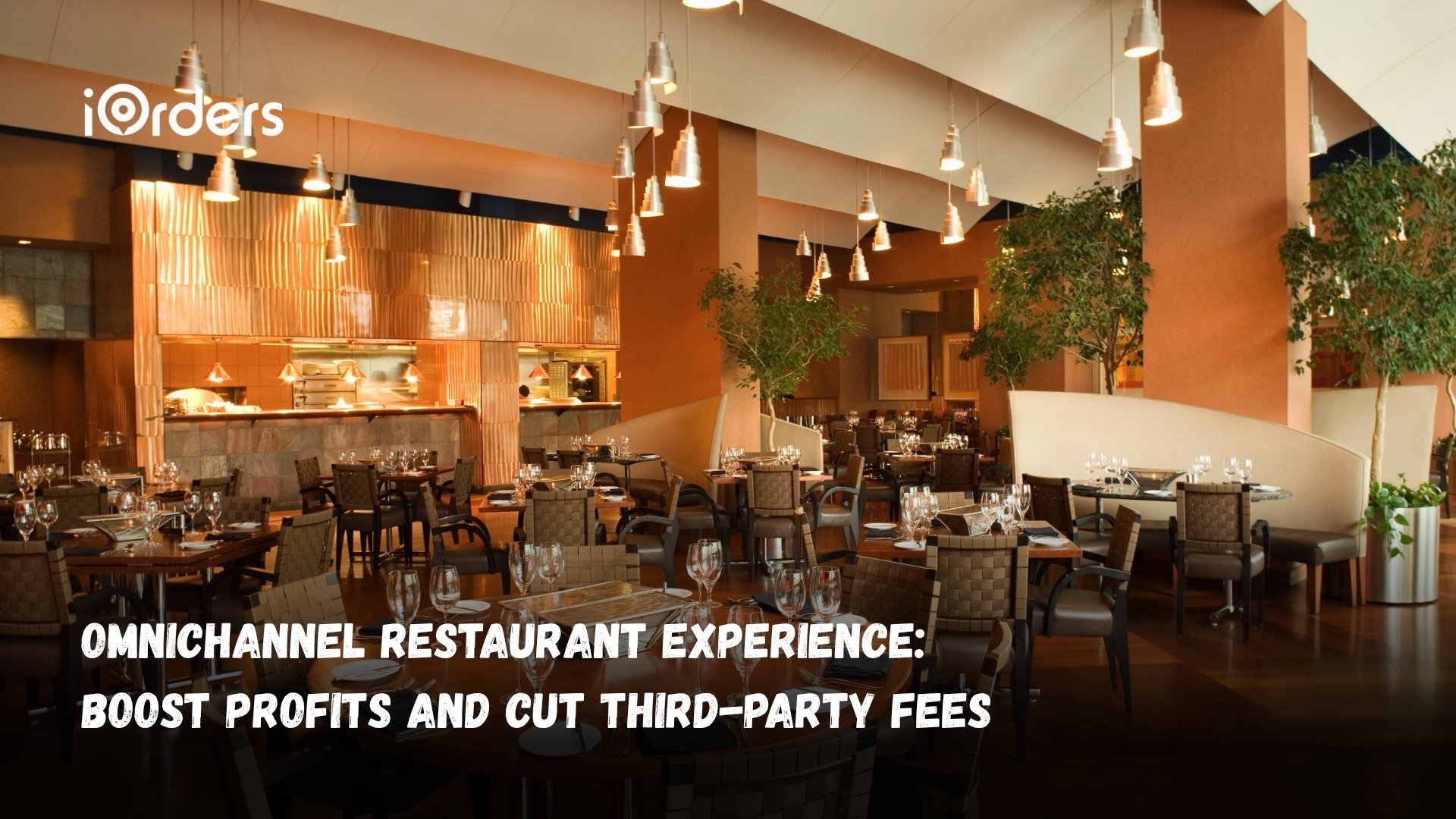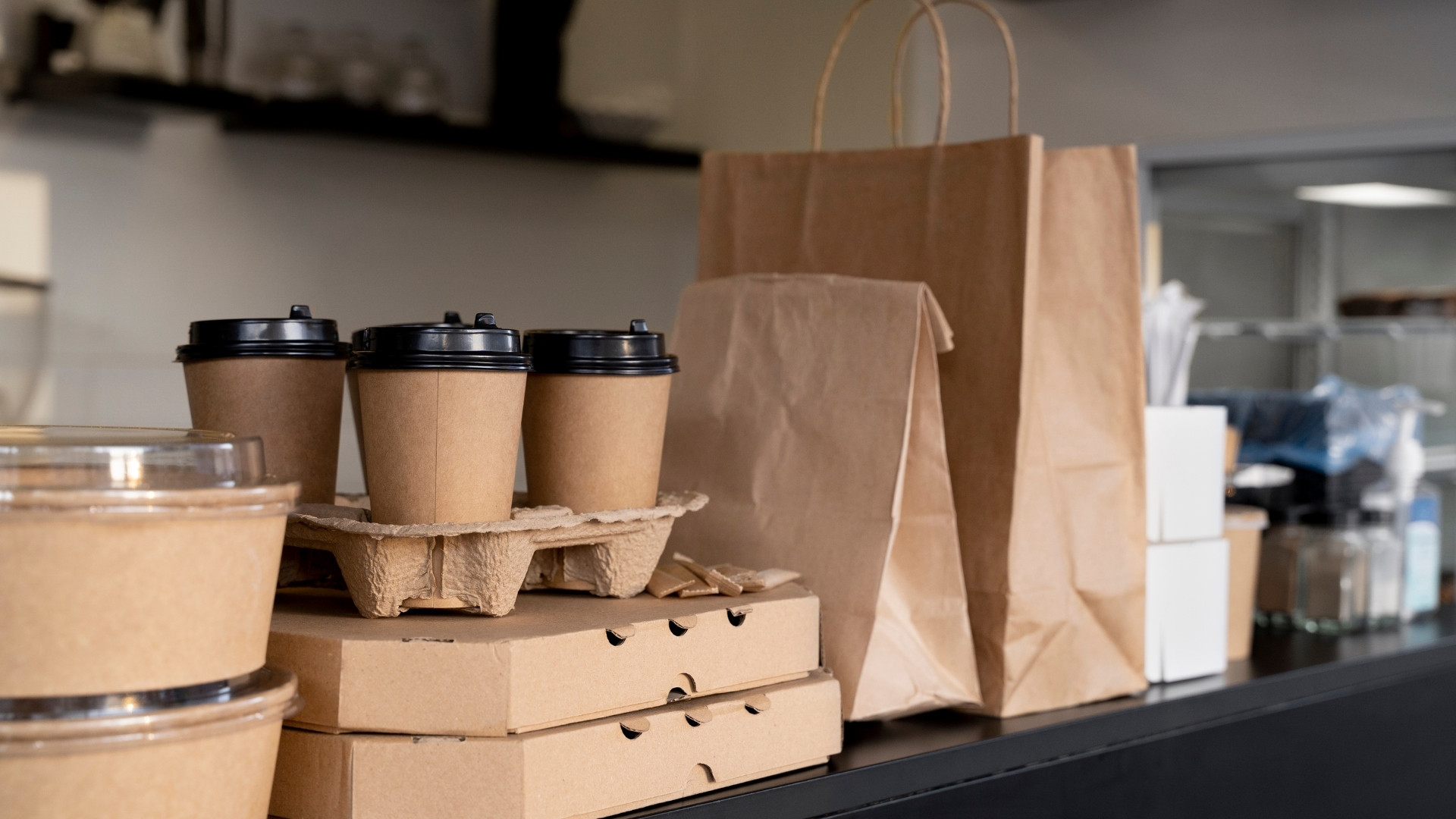November 19, 2025

As a restaurant owner, you’re likely all too familiar with the pressure of high third-party commission fees that eat into your profit margins. With platforms taking anywhere from 15% to 30% of each order, it’s tough to run a sustainable business while maintaining control over your customer relationships.
Worse, relying on these external platforms means losing valuable data about your guests, leaving you unable to personalize marketing efforts or truly understand their preferences. This leaves you at the mercy of these platforms, unable to fully own your business's growth.
In this blog, we’ll walk through how adopting an omnichannel restaurant experience can help you take back control. You’ll learn how to eliminate costly third-party fees, streamline your operations, and manage all your ordering channels, online, in-store, and delivery, from one unified system.
An omnichannel restaurant experience integrates all customer touchpoints, online ordering, in-store dining, delivery, and pickup into one cohesive system. It allows restaurants to manage orders seamlessly across channels, providing a consistent customer experience and full control over interactions, data, and branding.

This approach eliminates reliance on third-party platforms, reduces costs, and builds better customer engagement through personalized service, loyalty programs, and centralized order management.
The rise of the omnichannel restaurant experience is driven by a need to adapt to evolving market conditions. Traditional reliance on third-party platforms with high commissions has become unsustainable for many restaurants.
Customers are now demanding seamless, convenient experiences across online and in-store channels, pushing restaurants to move towards an integrated, tech-driven approach. Here are the benefits of adopting the omnichannel restaurant experience.
These benefits make the case for why omnichannel matters. But shifting to this model requires more than intent; it needs the right infrastructure. Each piece of that infrastructure plays a specific role in making the system work without adding friction to your day-to-day operations.
A successful omnichannel restaurant experience integrates all customer touchpoints. whether online, in-store, or delivery, into a seamless, unified system.

Key components include streamlined ordering systems, real-time tracking, personalized marketing, and flexible delivery options, all of which improve operational efficiency and customer satisfaction.
A unified ordering system integrates all customer touchpoints, from website orders to delivery, into a single platform. Real-time order tracking provides better accuracy across all channels.
Maintaining a consistent brand experience is essential to building trust and loyalty across every customer touchpoint. Seamless brand control means diners interact with your restaurant in the same way, whether through food delivery service or in-restaurant.
Offering multiple delivery and fulfillment options allows customers to choose the service that best suits their needs, while restaurant owners retain control over costs and quality.
By integrating customer data across all channels, restaurants can personalize marketing efforts, improve guest experiences, and build customer loyalty.
A scalable technology platform allows restaurants to grow and adapt without the need for constant system overhauls. As the business expands, it makes it possible to integrate new customer touchpoints, channels, or locations without disrupting current operations.
Having the right systems in place helps in operating the restaurant business smoothly across channels. But technology alone doesn't bring customers back; that requires marketing that uses the data and control you've built.
For restaurants implementing an omnichannel approach, marketing strategies must be designed to deliver consistent, personalized experiences across all touchpoints. This is achievable by integrating loyalty and rewards programs and managed marketing services, where restaurants can boost customer retention.

Integrating customer data from all touchpoints allows restaurants to offer personalized marketing efforts that resonate with individual preferences and behaviors. By using data to send tailored promotions, birthday rewards, or personalized offers, restaurants can increase the likelihood of repeat business and maintain customer relationships.
Building a loyalty and rewards program that works across all channels is key to omnichannel success. Customers should be able to earn and redeem rewards no matter how they engage with the restaurant, whether it's through the app, website, in-store dining, or delivery.
Also Read: Streamline Restaurant Ordering with a Free Mobile App
Effective cross-channel promotions help drive traffic between online ordering, delivery, and in-store dining. By offering discounts for customers who place an order online and pick it up in-store, or by using a QR code for the menu and links to exclusive offers, restaurants can seamlessly engage customers to interact with multiple channels.
Using social media and partnering with local influencers allows restaurants to engage with a wider audience and showcase their unique offerings. Social platforms are perfect for promoting special events, new menu items, or exclusive deals, while user-generated content (e.g., customer photos, reviews) can amplify the brand’s reach and credibility.
By analyzing customer data, restaurants can refine their marketing strategies to run more targeted campaigns that drive higher engagement and conversion rates. Using A/B testing for promotions, subject lines, and app notifications helps identify what resonates best with customers and thus boosts ROI.
These marketing tactics sound good in theory, but implementation rarely goes as planned. Most restaurants hit similar roadblocks when trying to unify their channels. Recognizing these challenges early makes it easier to prepare solutions that keep the transition from stalling halfway through.
To improve the omnichannel experience in restaurants, it is essential to understand the key challenges that come with integrating multiple channels. By addressing these challenges head-on with the right solutions, restaurants can increase profitability.
Below are the major hurdles restaurants face during omnichannel implementation, paired with solutions that align with industry best practices.
Understanding the challenges is half the work; the other half is finding a platform built to handle them. The right solution shouldn't just check boxes; it should eliminate the specific friction points that make omnichannel feel overwhelming to execute on your own.
iOrders helps restaurants create a unified omnichannel restaurant experience by streamlining operations across all customer touchpoints, online, in-store, and delivery. These features enable restaurants to reduce third-party fees and maintain control over customer interactions.
1. Commission-Free Online Ordering: Allows restaurants to offer branded online ordering systems on their website and mobile app without third-party commission fees.
2. Website & QR Ordering: Enables restaurants to capture orders from QR codes and their website, integrating multiple touchpoints into a single system.
3. Delivery-as-a-Service: Restaurants can use in-house delivery or integrate third-party logistics at flat fees.
4. Loyalty and Rewards: Offers cross-channel loyalty programs, rewarding customers for ordering online, picking up, or dining in, driving repeat business and customer retention.
5. Smart Campaigns: Uses customer behavior data to create tailored marketing campaigns that engage customers across all platforms and encourage repeat orders.
Adopting an omnichannel restaurant experience puts you back in control of your operations, customer interactions, and revenue. By connecting online ordering, in-store dining, and delivery into one system, you eliminate high commissions, streamline workflows, and give customers a consistent experience across every touchpoint.
Integrated data, real-time order management, flexible fulfillment, and personalized marketing work together to increase retention and reduce dependence on third-party platforms.
iOrders gives you a complete online solution to manage every channel in one place while helping you reduce third-party fees and strengthen customer relationships.
Book a demo now to see how it can support your restaurant’s growth.
1. What are the 4 C's of omnichannel?
The 4 C’s are Consistency, Convenience, Communication, and Customer Data. Together, they make every touchpoint feel connected and help restaurants deliver a unified experience across online, in-store, and delivery channels.
2. Is McDonald's omnichannel?
Yes. McDonald’s connects mobile ordering, kiosks, delivery apps, loyalty rewards, and in-store dining in a single ecosystem, giving customers multiple ways to order while keeping the experience unified.
3. What’s an example of an omni-channel gold?
A strong example is when a customer orders through the app, earns loyalty points, picks up curbside, and later receives personalized offers based on past orders. All touchpoints support one continuous experience.
4. What is skill level omnichannel?
Skill level in omnichannel refers to how well a business can manage and connect different customer touchpoints. Higher skill means better coordination across channels, smoother operations, and more consistent customer interactions.
5. What is an example of an omnichannel customer journey?
A customer sees a promo on social media, scans a QR code to check the menu, orders online, tracks delivery in real time, and later redeems loyalty points in-store. Every step flows through a connected system.